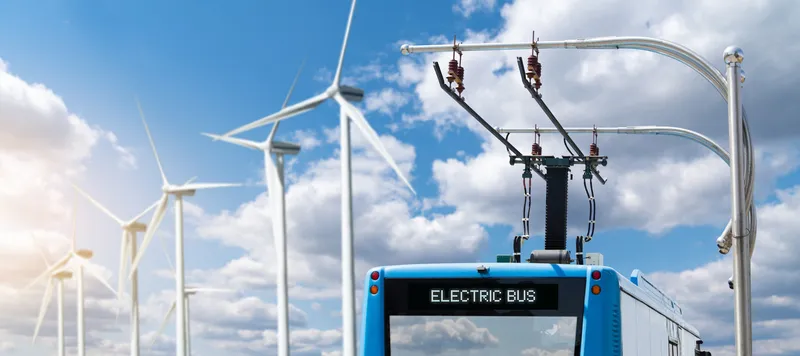Announcing President Obama’s US$94.7 billion Fiscal Year 2016 budget for the US Department of Transportation, Transportation Secretary Anthony Foxx said, “Our budget proposal lays the foundation for a future where our transportation infrastructure meets the demands of a growing population and an economy that depends on the free flow of freight,” said Secretary Foxx. “This Administration is looking towards the horizon – the future – but to do this we need Congress’ partnership to pass a long-term reauthorisa
February 3, 2015
Read time: 3 mins
Announcing President Obama’s US$94.7 billion Fiscal Year 2016 budget for the 324 US Department of Transportation, Transportation Secretary Anthony Foxx said, “Our budget proposal lays the foundation for a future where our transportation infrastructure meets the demands of a growing population and an economy that depends on the free flow of freight,” said Secretary Foxx. “This Administration is looking towards the horizon – the future – but to do this we need Congress’ partnership to pass a long-term reauthorisation to put Americans to work rebuilding America.”
The proposal makes critical investments in infrastructure needed to promote long-term economic growth, enhance safety and efficiency and support jobs for the 21st century.
The last year has demonstrated the pitfalls of repeated short term funding extensions and is why the President’s FY 2016 budget creates additional certainty with a six-year US$478 billion surface transportation reauthorisation proposal that would improve America’s highways, ports and transit networks. The proposal would better ensure these systems are safe, and support the development of a high-performance rail system. The proposed budget would be paid for in part with US$238 billion from transition revenues generated from pro-growth business tax reform.
Speaking at Google headquarters in Mountain View, California, Foxx highlighted the President’s budget proposal, which notably includes funding to advance research and autonomous vehicles, while announcing his report Beyond Traffic, a look at future trends and choices that will impact America’s transportation system over the next three decades.
In order to tackle the infrastructure deficit and support job creation, the six-year budget includes US$317 billion to rebuild America’s roads and bridges, an increase of almost 29 per cent over current investment in the highway system. To help meet growing demand, the budget provides more than US$143 billion to create and improve transit and passenger rail service.
The budget also invests US$935 million over six years in the future of intelligent transportation systems, including US$158 million in FY 2016 to accelerate research on vehicle automation and vehicle-to-vehicle technology.
In addition to US$18 billion for multi-modal freight programs to strengthen America’s global competitiveness, US$1 billion annually has been allocated for credit assistance for nationally or regionally significant transportation projects through the Transportation Infrastructure Finance and Innovation Act (TIFIA) Program.
The six-year budget reinforces the Department’s commitment to safety, increasing funding for the834 National Highway Traffic Safety Administration (NHTSA) by an average of 20 per cent annually, providing US$6 billion to address safety defects on US highways. To modernise and improve NHTSA’s data collection tools, the budget includes US$41.7 million in FY 2016 to establish data collections sites and expand the agency’s analytical capacity.
US$3 billion over six years has been provided to help with the implementation of positive train control, with a further US$29 billion for targeted infrastructure investments for deficient roads and bridges through the Critical Immediate Safety Investments Program, including US$7.35 billion for rural communities.
In addition, the FY 2016 budget includes US$956 million to continue efforts to modernize America’s air-traffic control system and help transition from a ground-based radar system to a more accurate, satellite-based system of the future, known as NextGen.
The proposal makes critical investments in infrastructure needed to promote long-term economic growth, enhance safety and efficiency and support jobs for the 21st century.
The last year has demonstrated the pitfalls of repeated short term funding extensions and is why the President’s FY 2016 budget creates additional certainty with a six-year US$478 billion surface transportation reauthorisation proposal that would improve America’s highways, ports and transit networks. The proposal would better ensure these systems are safe, and support the development of a high-performance rail system. The proposed budget would be paid for in part with US$238 billion from transition revenues generated from pro-growth business tax reform.
Speaking at Google headquarters in Mountain View, California, Foxx highlighted the President’s budget proposal, which notably includes funding to advance research and autonomous vehicles, while announcing his report Beyond Traffic, a look at future trends and choices that will impact America’s transportation system over the next three decades.
In order to tackle the infrastructure deficit and support job creation, the six-year budget includes US$317 billion to rebuild America’s roads and bridges, an increase of almost 29 per cent over current investment in the highway system. To help meet growing demand, the budget provides more than US$143 billion to create and improve transit and passenger rail service.
The budget also invests US$935 million over six years in the future of intelligent transportation systems, including US$158 million in FY 2016 to accelerate research on vehicle automation and vehicle-to-vehicle technology.
In addition to US$18 billion for multi-modal freight programs to strengthen America’s global competitiveness, US$1 billion annually has been allocated for credit assistance for nationally or regionally significant transportation projects through the Transportation Infrastructure Finance and Innovation Act (TIFIA) Program.
The six-year budget reinforces the Department’s commitment to safety, increasing funding for the
US$3 billion over six years has been provided to help with the implementation of positive train control, with a further US$29 billion for targeted infrastructure investments for deficient roads and bridges through the Critical Immediate Safety Investments Program, including US$7.35 billion for rural communities.
In addition, the FY 2016 budget includes US$956 million to continue efforts to modernize America’s air-traffic control system and help transition from a ground-based radar system to a more accurate, satellite-based system of the future, known as NextGen.







